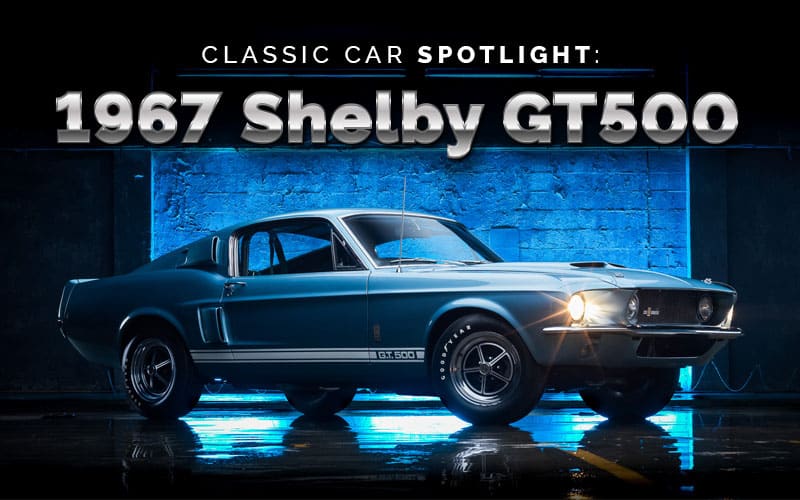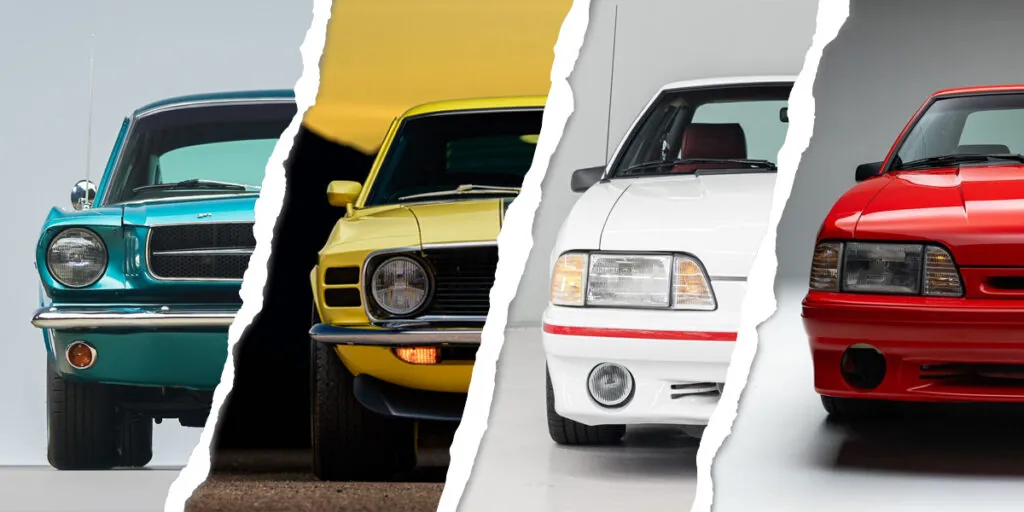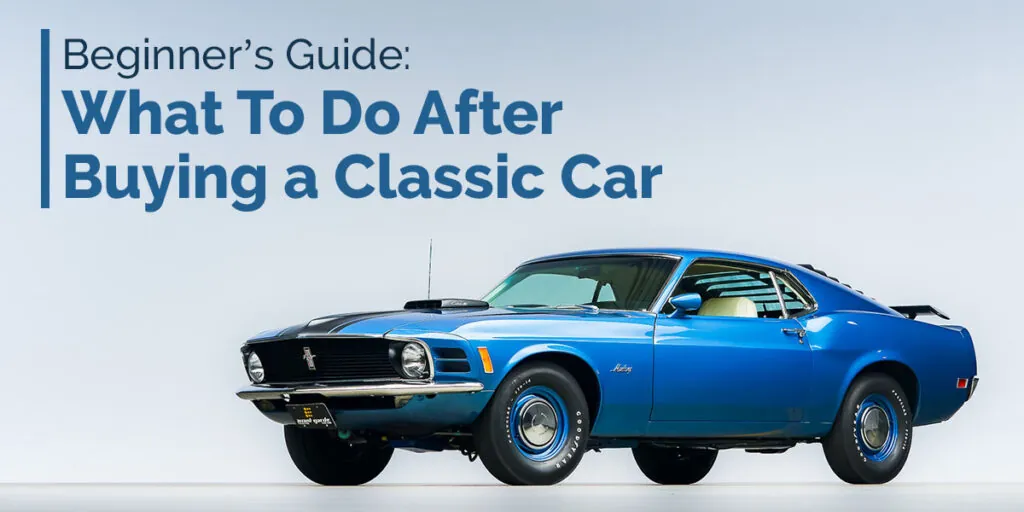Carroll Shelby introduced the 1967 Shelby GT500 to the world with the remarks, “This is the first car I’m really proud of.” That was quite a statement given that in 1965, Carroll Shelby converted the “K-code” 289CID V-8 Mustang to the Shelby GT350 and GT350R. Those earliest Shelby Mustangs were a clever combination of parts-bin engineering and a bit of original thinking – plus, of course, the chicken-farmer-turned-racer’s notorious grasp of public relations and marketing.
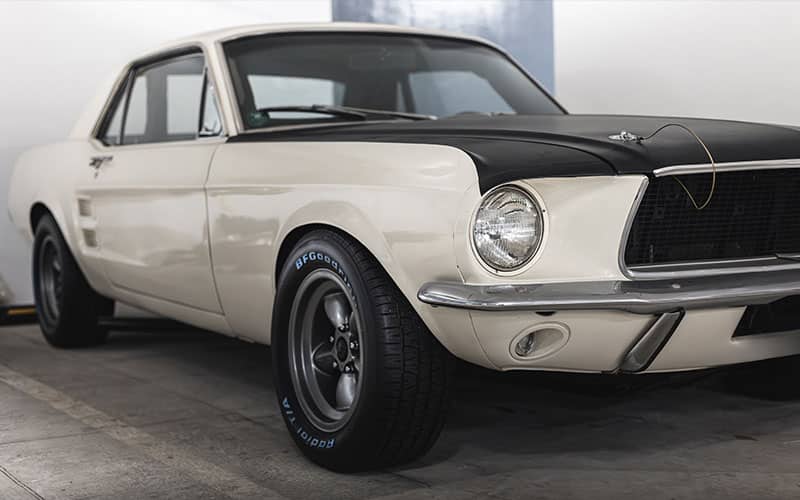
Like the GT350 (and rent-a-racer GT350-H) before them, the GT500 was converted to Shelby specs at the firm’s original Venice, CA facility. Much of the exterior sheet metal was replaced with fiberglass pieces styled in conjunction with Ford. But these Mustangs arrived with a heart that was already unique: the 428ci “Cobra LeMans” V-8. For 1967, Ford offered a 390ci “big-block” V-8 in standard Mustangs. Shelby’s genius idea: use the 428 from Ford’s “police interceptor” sedans instead, which had a little more bore and a little more stroke, then give it as aggressive an intake and exhaust system as possible.
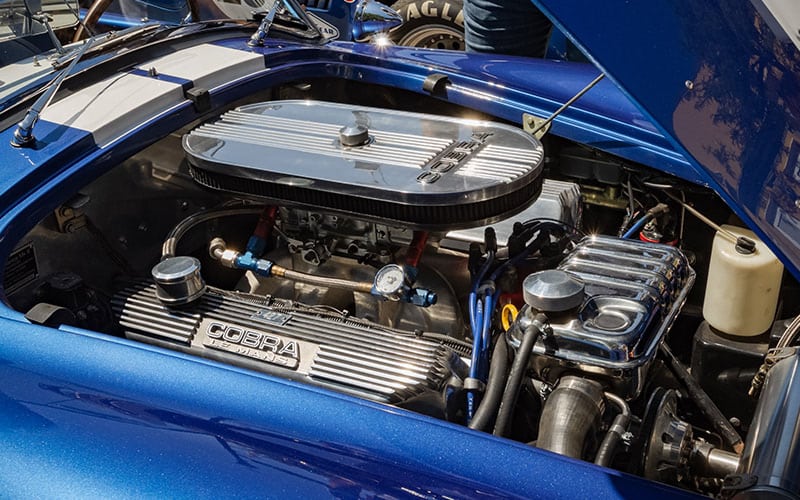
In theory, you could also buy a 1967 GT500 with the race-spec 427ci big-block, which had more bore, less stroke, and better oiling. Did anybody actually get one? Opinions vary, but there’s no paperwork to support any claim of customer deliveries in the first year of the GT500.
The big jump in rated power over the small-block GT350 wasn’t quite reflected in contemporary-testing quarter-mile times, which weren’t much better than the smaller car. In daily driving, however, the superiority of a low-stress big-block over a high-revving 289 was plain to see.
Another big thing to distinguish the GT500: a roll bar installed by Shelby for some additional protection on the racetrack or during other competitive events up to and including a bit of Woodward Avenue street racing. All buyers had the choice of 4-speed manual or 3-speed automatic. And while it’s common to see twin racing stripes on 1967 Shelby Mustangs, those were never supplied at the Shelby factory but instead were dealer-installed. Original GT500s will have no stripes and they will have the secondary headlights together in the center of the grille. (Some states required a retrofit to comply with regulation for minimum distance between headlights.)
The Popularity of The Shelby Mustang in 1967
With its scoops, flares, horsepower, unique grille, and rollbar (that was visible on the single convertible built) the GT500 was a hit, selling 2,048 examples at a base sticker price of approximately $4,200. That was almost two GT500s for every one of the 1,175 small-block GT350s built! The market was speaking loud and clear about their preferences. A high-performance “Super Snake” version for $8,000 was not a hit, and only two cars are known to have been built in this spec, which included a full GT40-spec 427 race engine. The remaining car, which was the original prototype, sold at Mecum Auctions in 2019 for a robust $2.2 million.
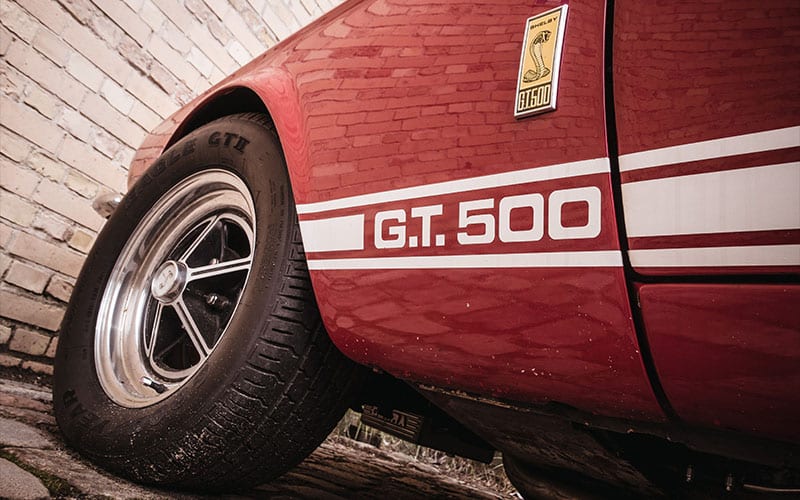
The popularity of the standard GT500 was enough for Ford to strong-arm Shelby out of doing assembly and builds at his own facility. For many years after, all “Shelby Mustangs” would be built either by A.O. Smith in Michigan or simply front-to-back by Ford, a situation that didn’t change until the arrival of a new Shelby American facility in the 21st century. Even then, Ford continued, and continues, to assemble “regular” Shelby Mustangs on the primary Mustang line in Flat Rock, MI.
The Story of the 428
The big-block 428 was already a known quantity at Ford, as it was popular with “special service” vehicles used by everyone from the local police and fire departments to the FBI. To further fortify it for Mustang duty, Shelby added a medium-rise aluminum intake manifold and two Holley 4-barrel carbs rated at 600cfm each.
In the years that followed, much was made of the differences between the original 428 Police Interceptor engine, the Tasca Ford 428 which was developed by Tasca Ford of Providence, RI, and the 1968 428 Cobra Jet, developed in-house by Ford, that would go on to set new standards for ponycar performance. In particular, the latter engine had heads and an intake manifold from the 427-race motor. It would prove to be a success in the 1968 Shelby GT500KR and was indisputably superior to the 1967-spec 428PI.
There has also been a lot of speculation that the 1967 GT500 was “underrated” from the factory to calm down the insurance companies or bamboozle the competition, but the performance numbers recorded by Car and Driver, which include a 15.0 second quarter-mile time, don’t support that speculation. And in reality, the quoted power was more than enough to worry the folks over at Chevrolet.
It should also be noted that “GT350” and “GT500” never really meant anything; Shelby just liked the names. Most “GT350” cars had a 289 or 302, while nearly all the “GT500” cars were 428ci. Today’s massively powerful GT500, which exceeds anything done in the Sixties by a long shot, has just 315 cubic inches, albeit with 4-valve heads, a massive supercharger, and highly sophisticated engine management.
Introducing “Eleanor”
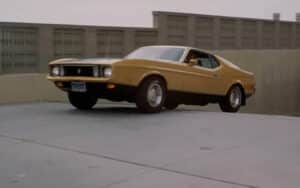
The original Gone in 60 Seconds film used 1971 Mustangs painted schoolbus yellow and visually updated with 1973 grilles. They weren’t even Mach 1 models – they were just painted to vaguely resemble the Mach 1.
For the Gone in 60 Seconds remake in 2000, it was decided to up the ante a bit and build a full dozen customized, high-power 1967 GT500 replicas to play the role of “Eleanor.” Nine were shells but three were completely functional. All were built from original production 1967 fastbacks that were not GT500s.
The “Eleanor” from the promo photos had a lot of differences from a 1967 GT500 beyond the unusual bodywork. It was powered by a highly-tuned 351 small-block with a Tremec TKO 5-speed. There was even a NOS-branded nitrous system! The question that animates Mustang purists is this: Can you even call a regular 1967 fastback with a small-block a “Shelby” of any kind? Much less a GT500? That’s the magic of Hollywood for you.
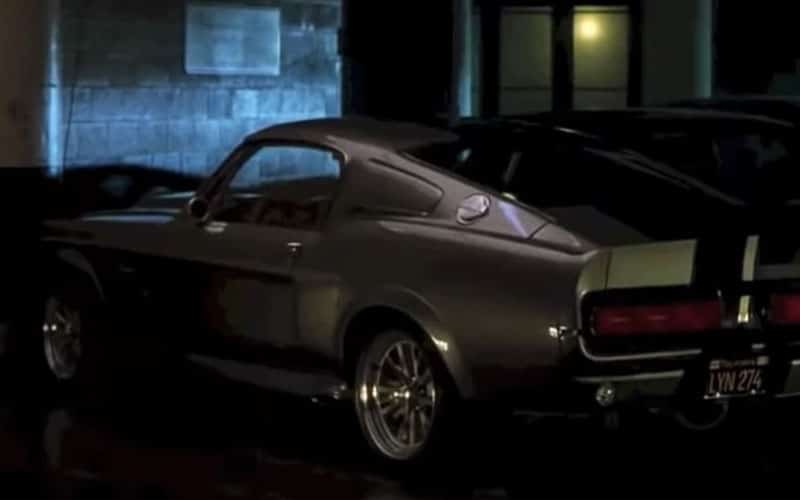
Other Notable Shelby Mustangs of the 1960s
In 1968, the GT350 got a 302-ci small block that made less power than its K-code predecessors, while the GT500 received the Cobra Jet as a mid-year update. Once again, the GT500 handily outsold the GT350. They were called “Shelby Cobra GT350” and “Shelby Cobra GT500”, trading on the reputation of the 427ci Cobra sports car. Convertibles were available in series production for the first time.
1969 was the final year for Shelby Mustangs in the United States, although a few leftover vehicles were re-stamped as 1970 models with black hood stripes and a front chin spoiler added after the fact. The larger body and lack of performance advances kept the buyers away, while differences between Ford and Shelby himself continued to fester. The decision was made to discontinue the partnership. By then, Ford had its own race-proven brand: the high-revving, Trans-Am-series-winning Boss 302. A variety of Shelby-inspired and Cobra-badged Mustangs would be made in the years afterwards before the return of a “proper” Shelby with the 2007 GT500.
The GT500 Today
While the 1967 GT350 remains a solid investment and a reliable auction record-setter, its big-block sibling generates a lot more excitement in the market, with some GT500s recently selling for twice the money commanded by similar GT350s. Originality remains important, although there’s always some debate about stripes and headlight position. The good news is that it’s still often possible to buy a decent GT500 at auction without paying Hemi Mopar money.
If you want the experience of specifying and taking delivery of a brand-new GT500, the folks at Revology can make that dream come true. Expect to pay about $320,000 for a “1967” Mustang made entirely of new parts. The engine, however, isn’t a 428PI or a big block of any kind; it’s a supercharged 5.0 “Coyote” modular motor, rated at 710 horsepower.
For a lot less, of course, you can find a cooking-grade 1967 Mustang and build your own clone to whatever degree of historical fidelity seems right. No, it won’t be a “real Shelby”, but it will still be a heck of a lot of fun. When it comes to the 1967 GT500, there’s no bad way to get behind the wheel of one. Unless, that is, you want to steal it – in which case you’d better hope your luck is better than it’s been for the Eleanor thieves in the movies!
